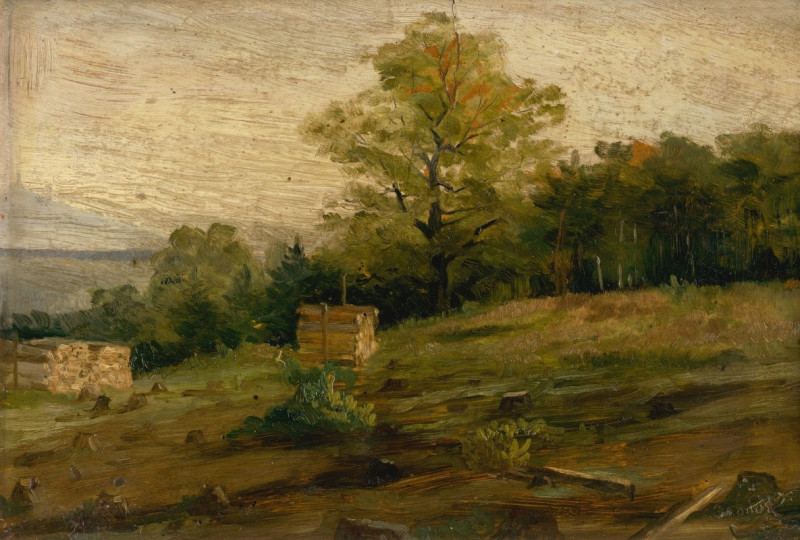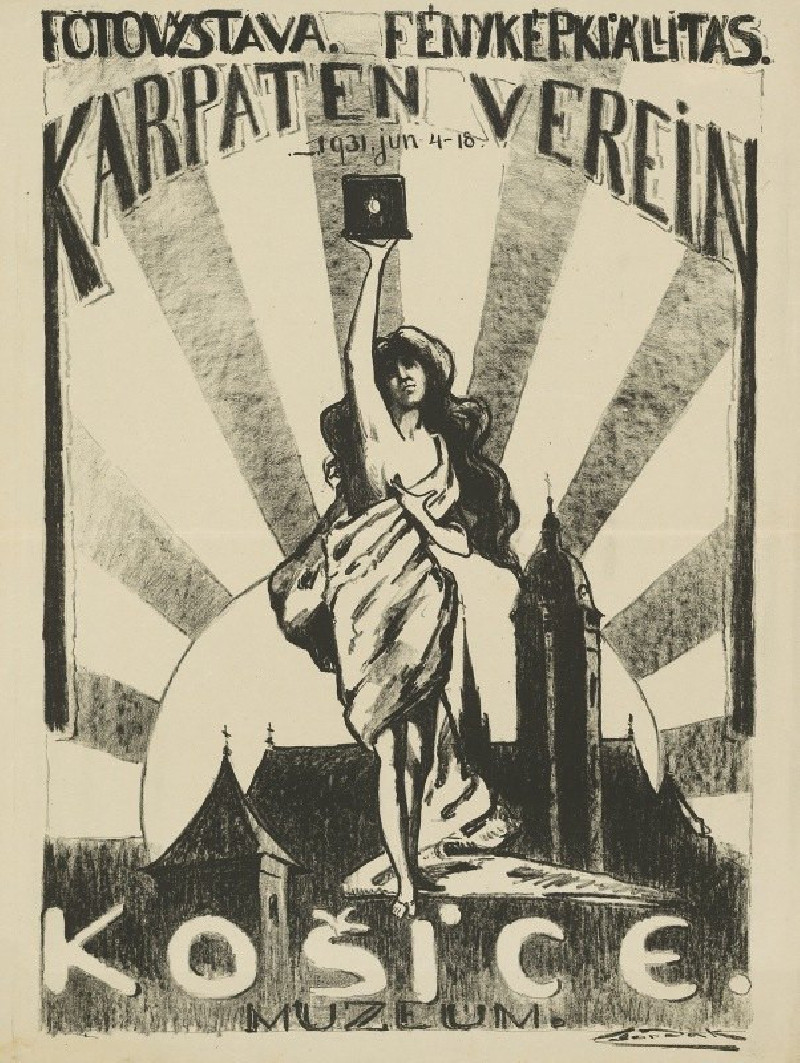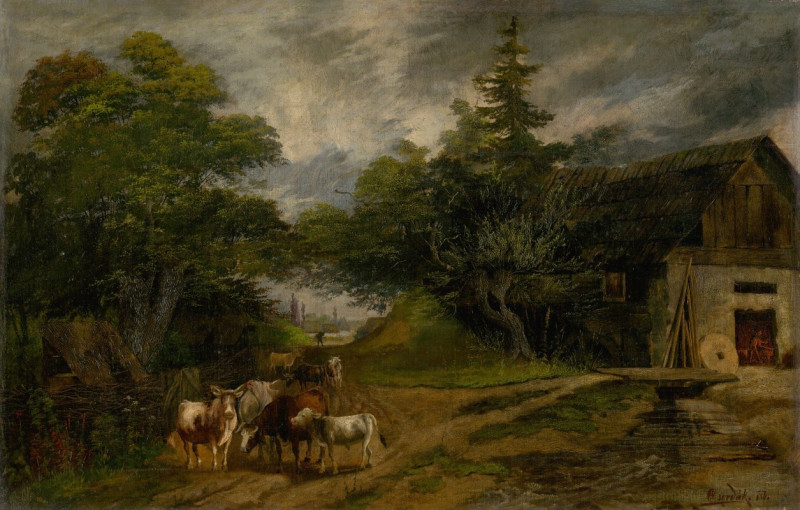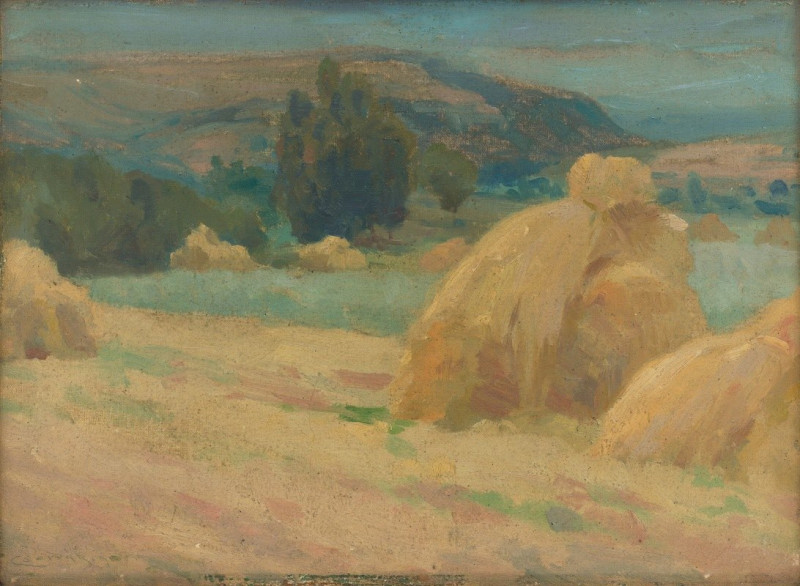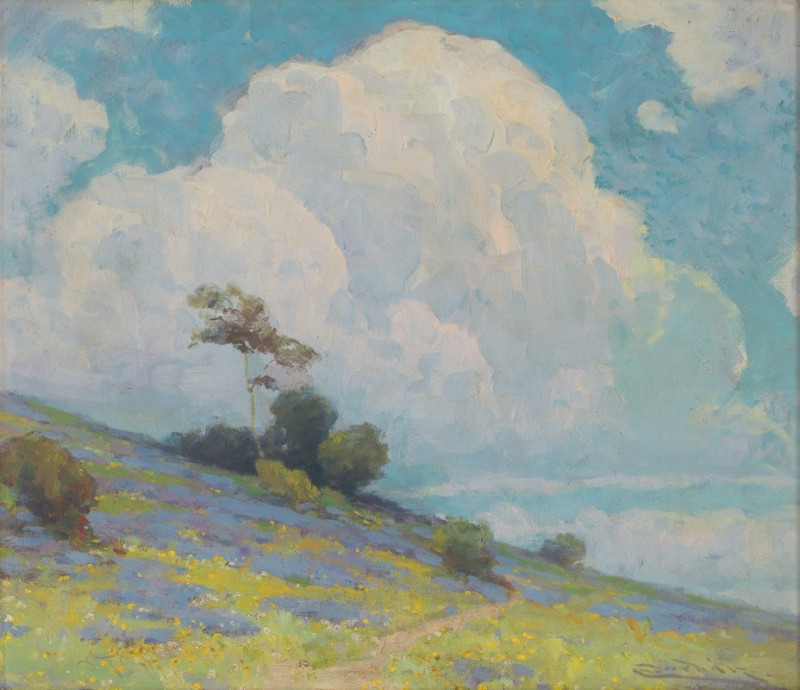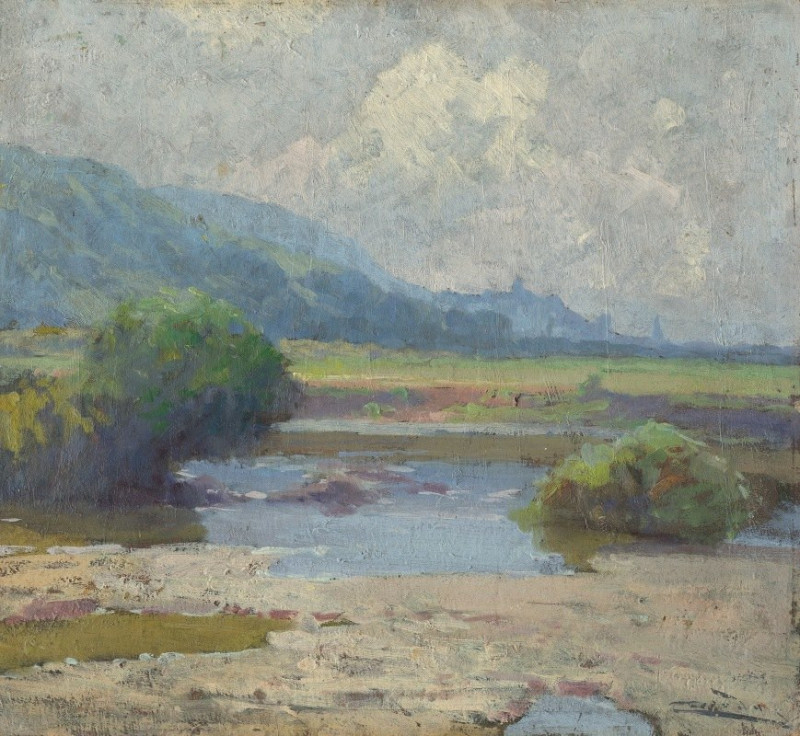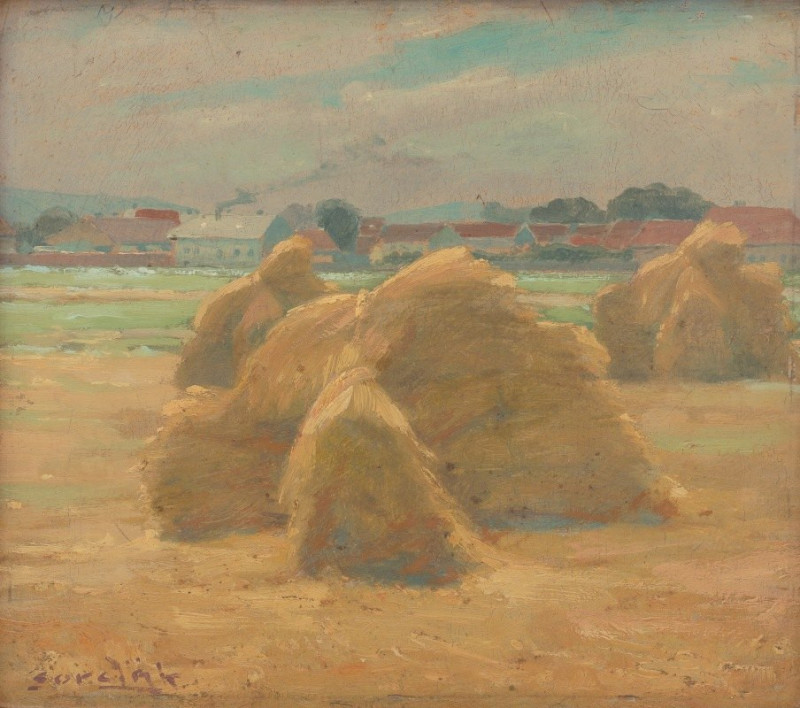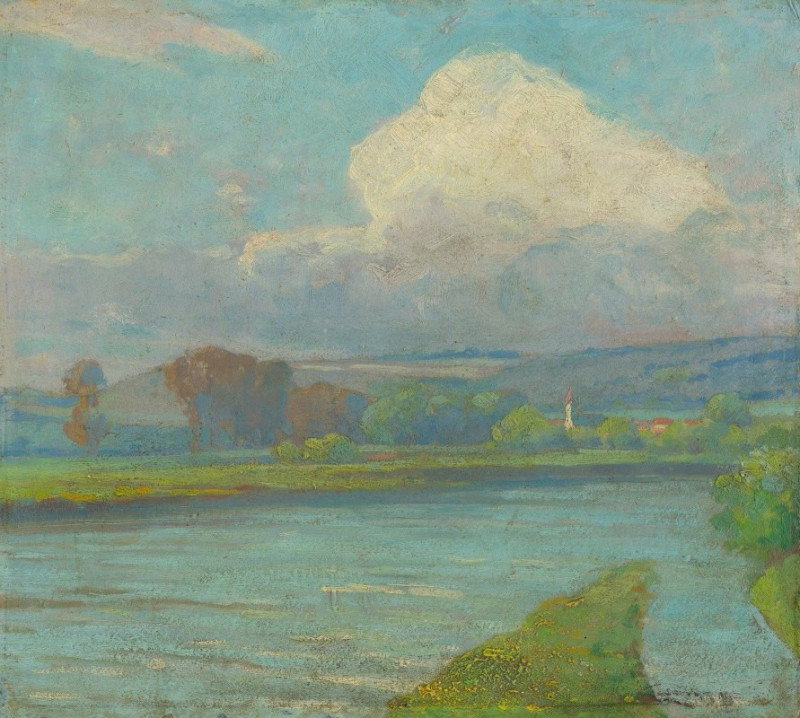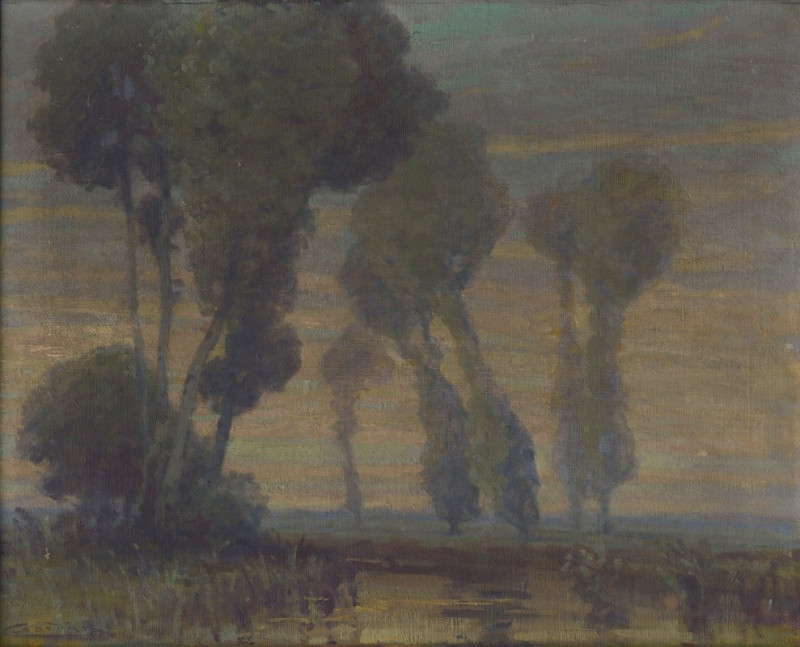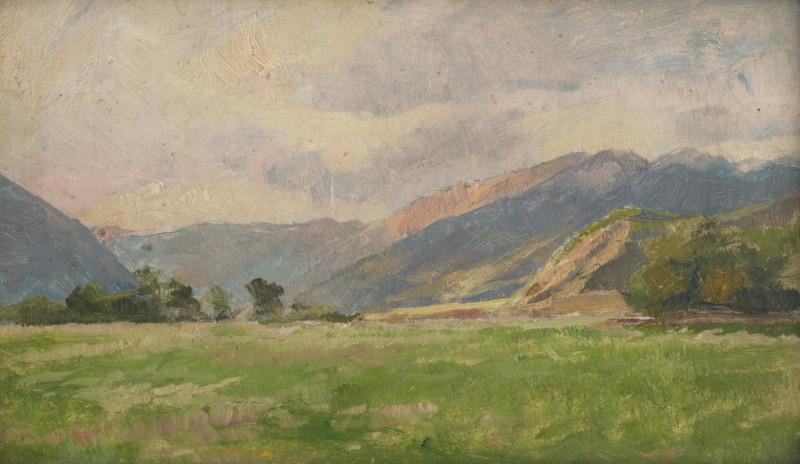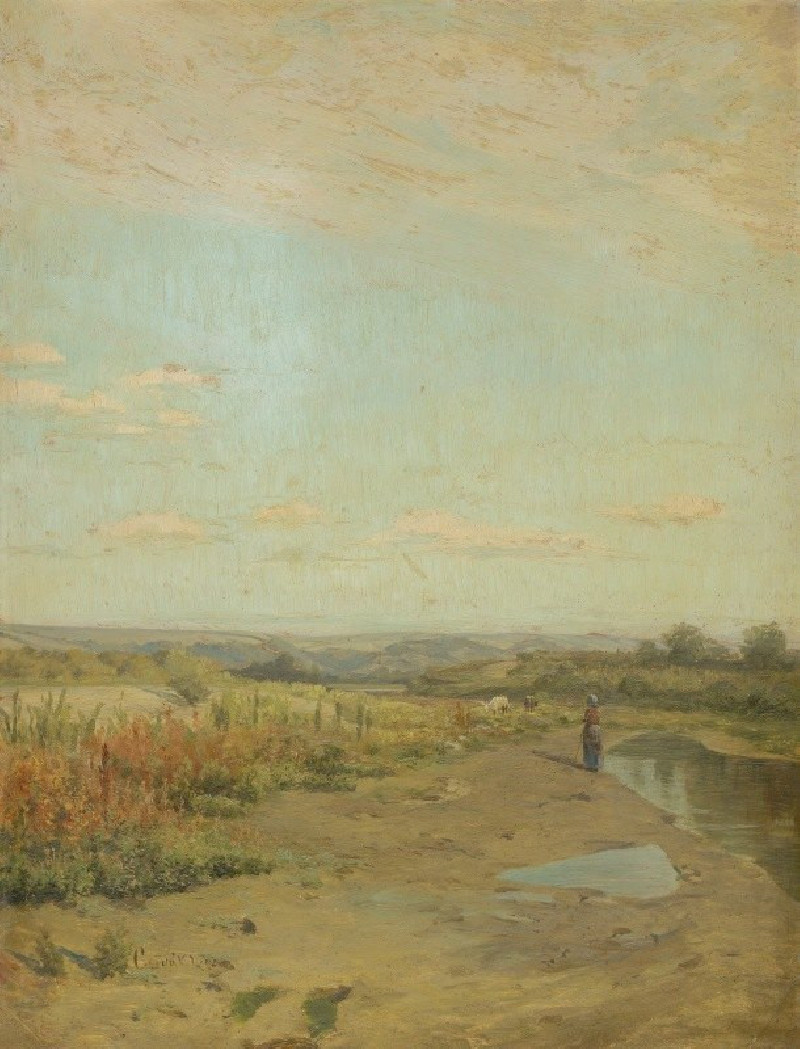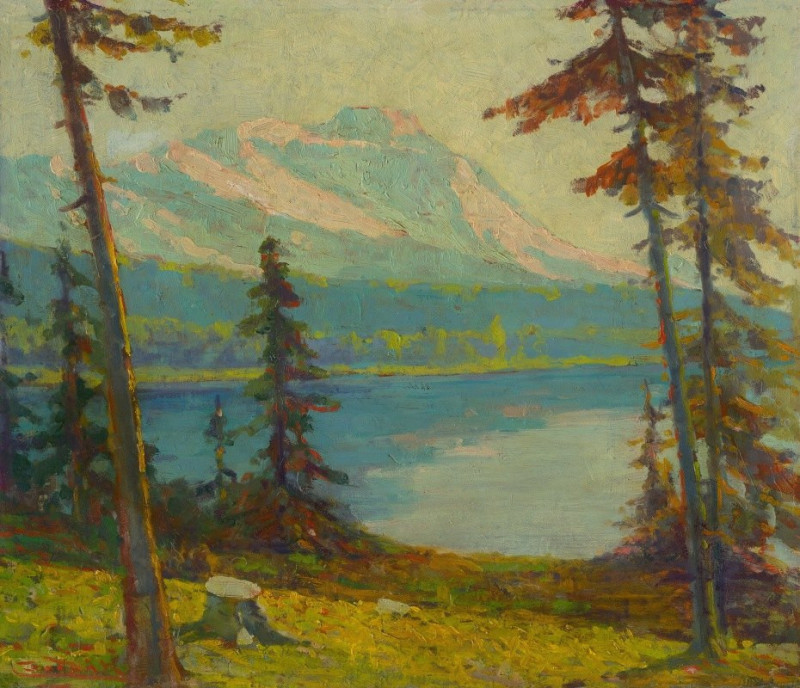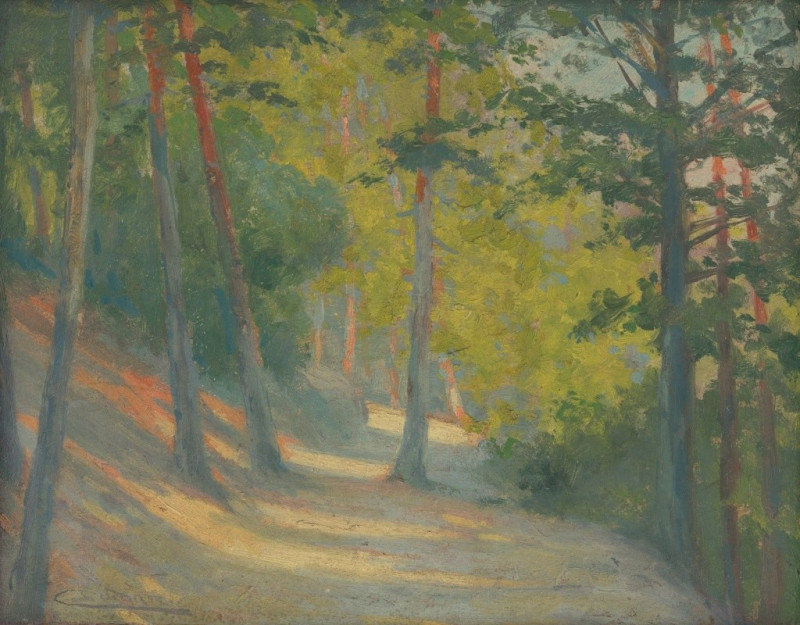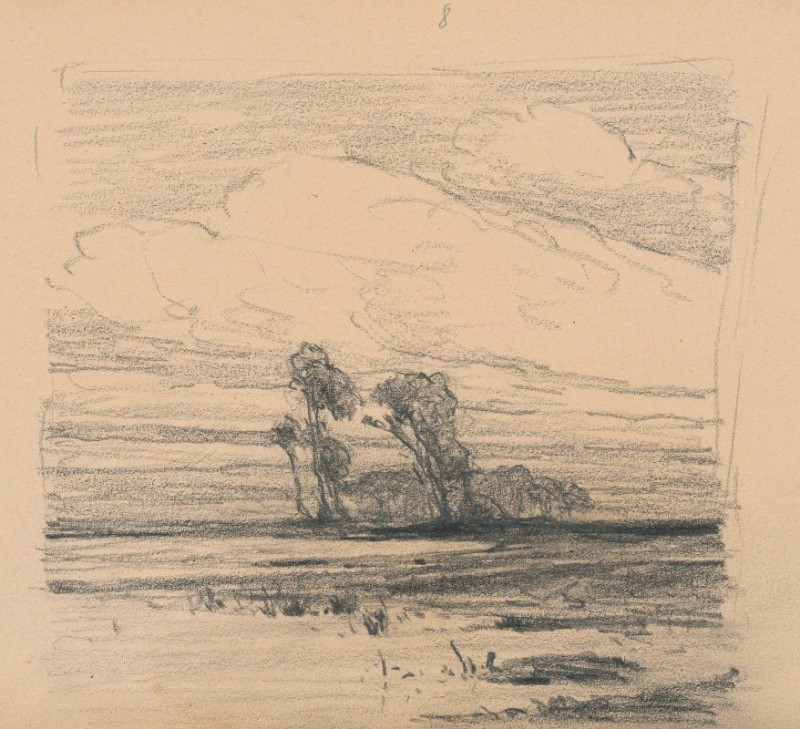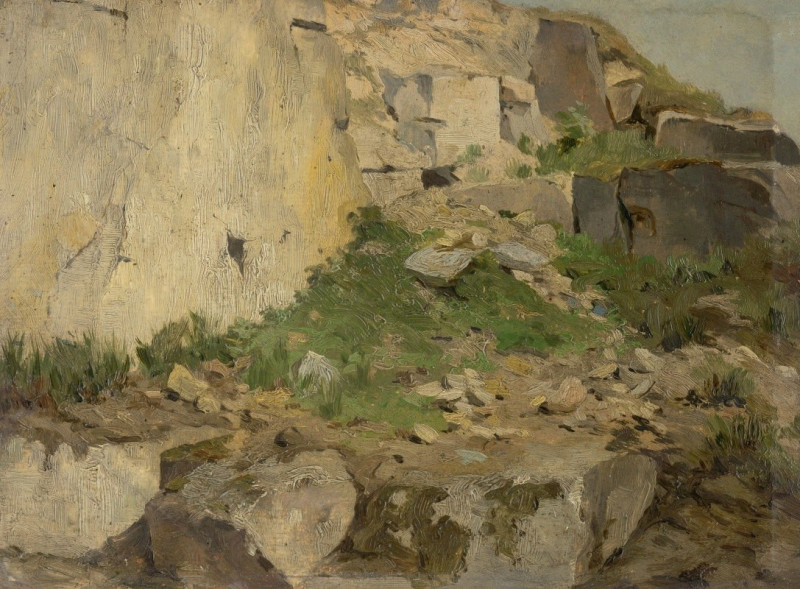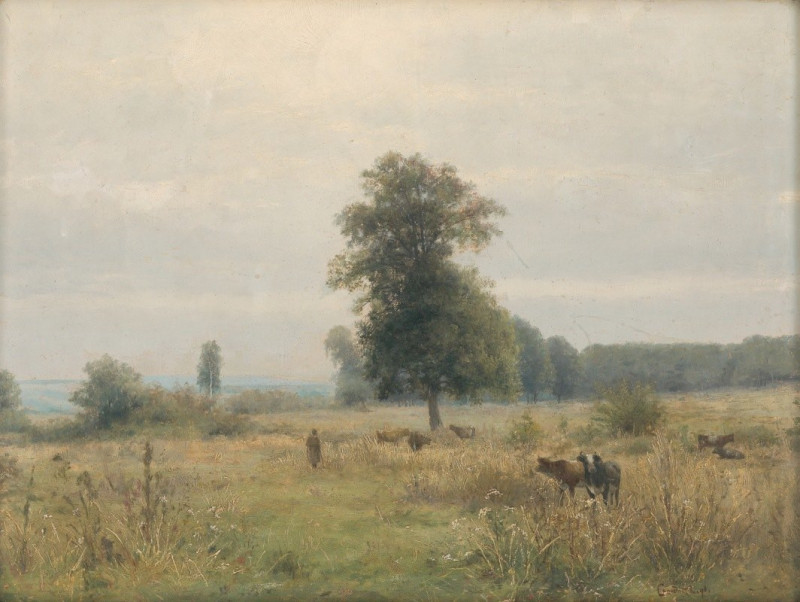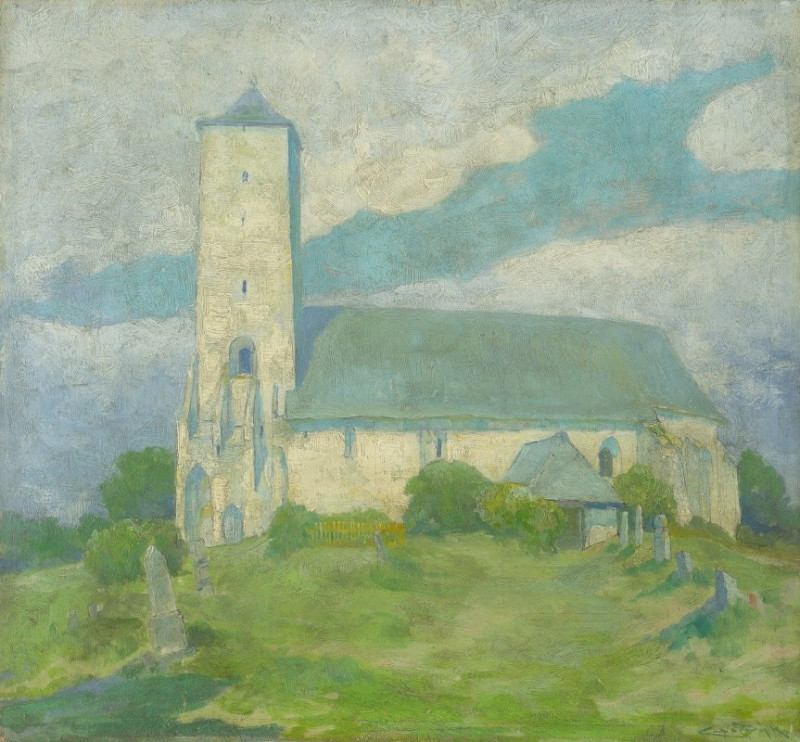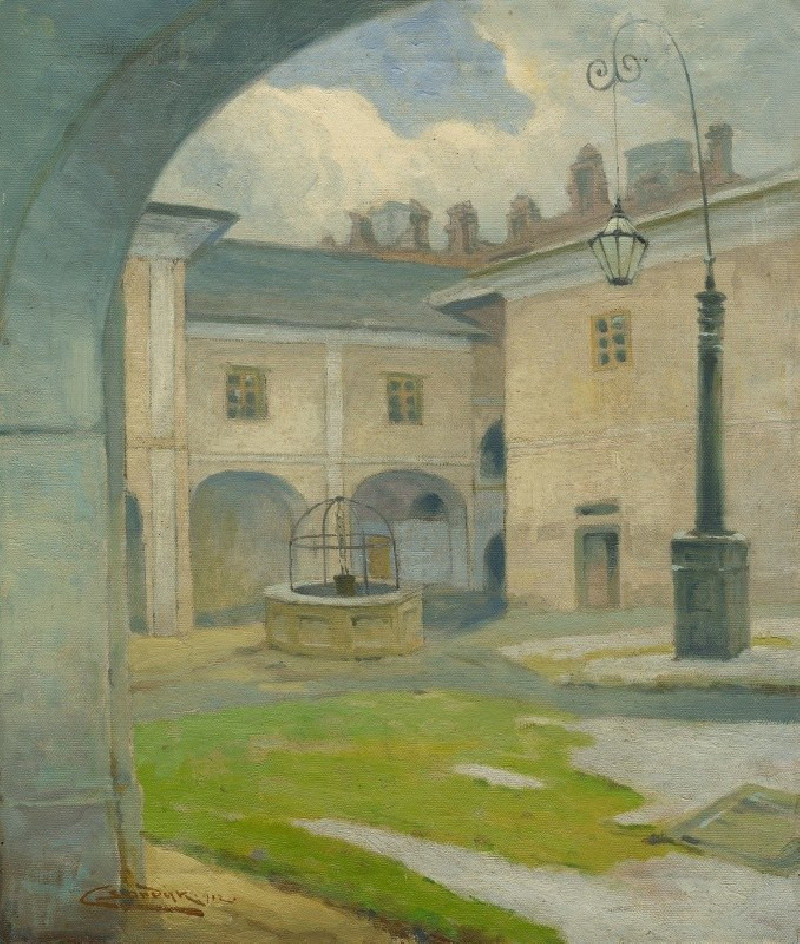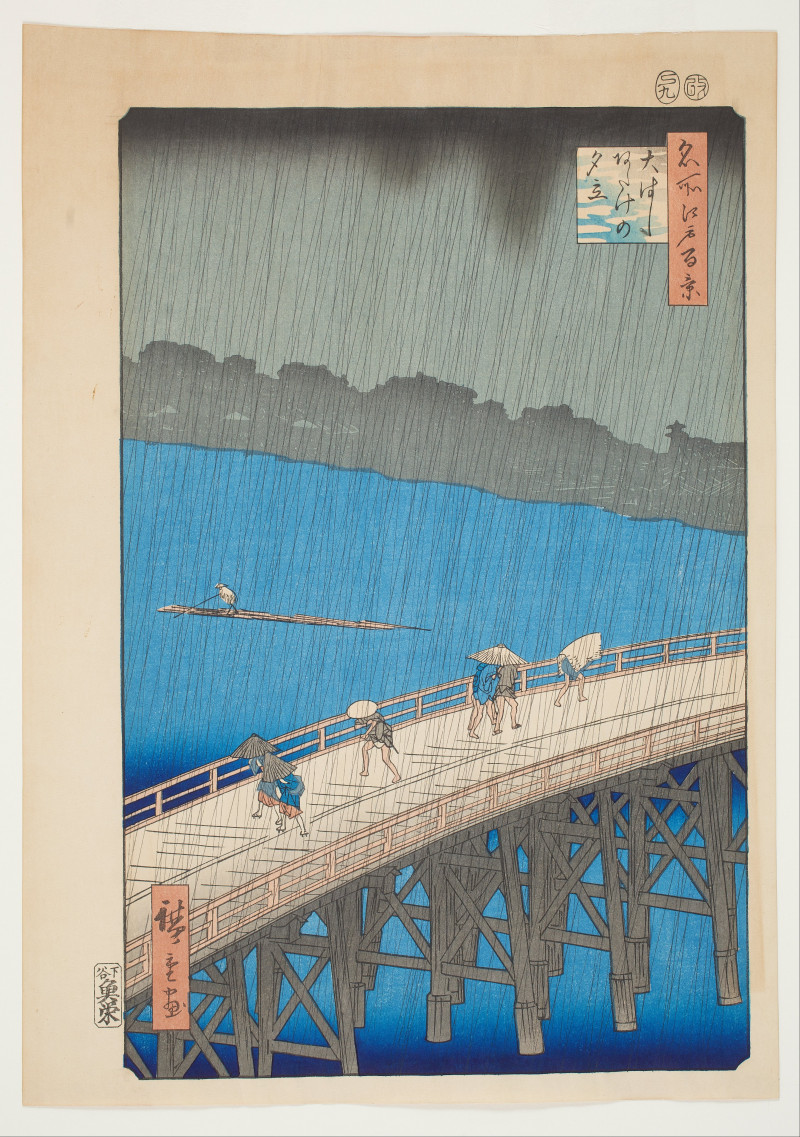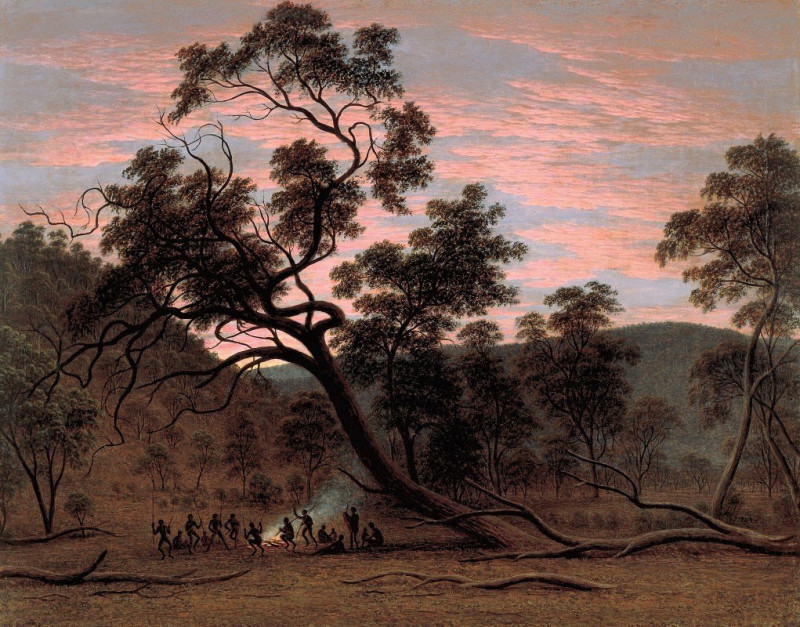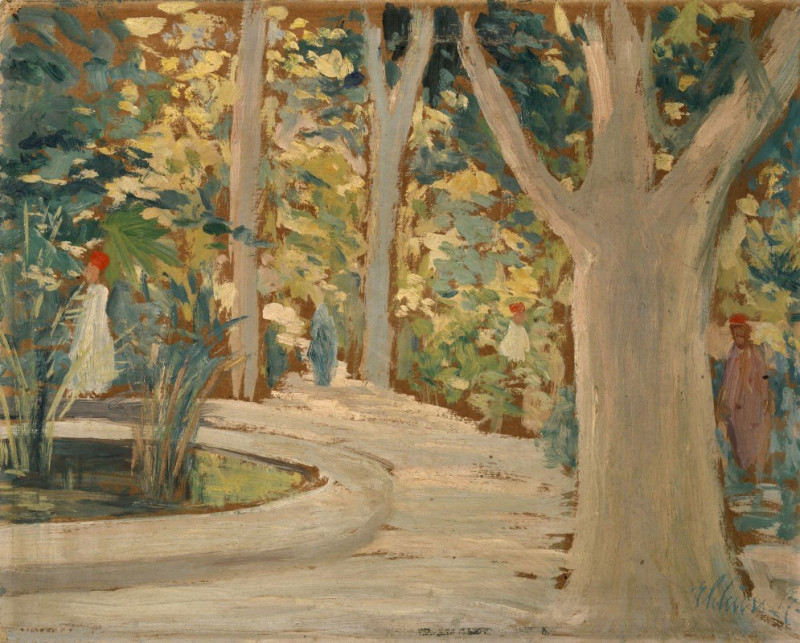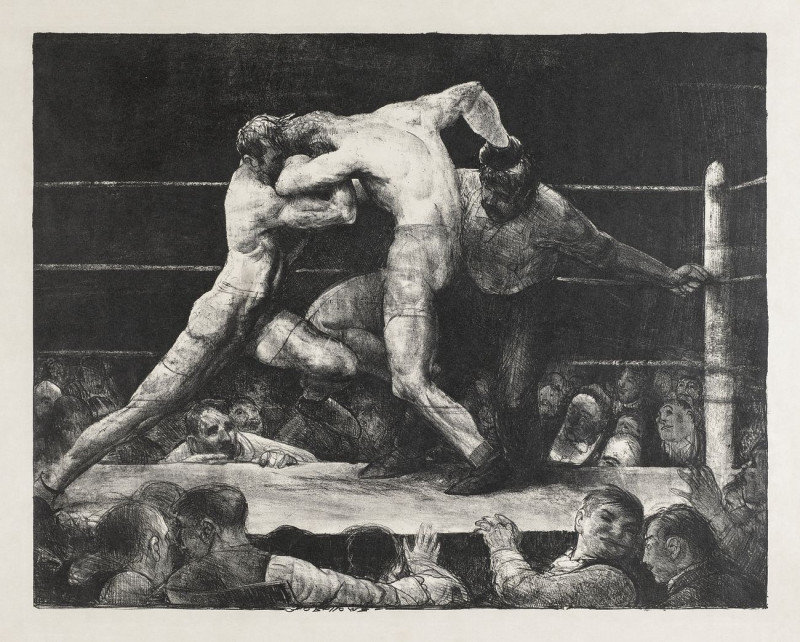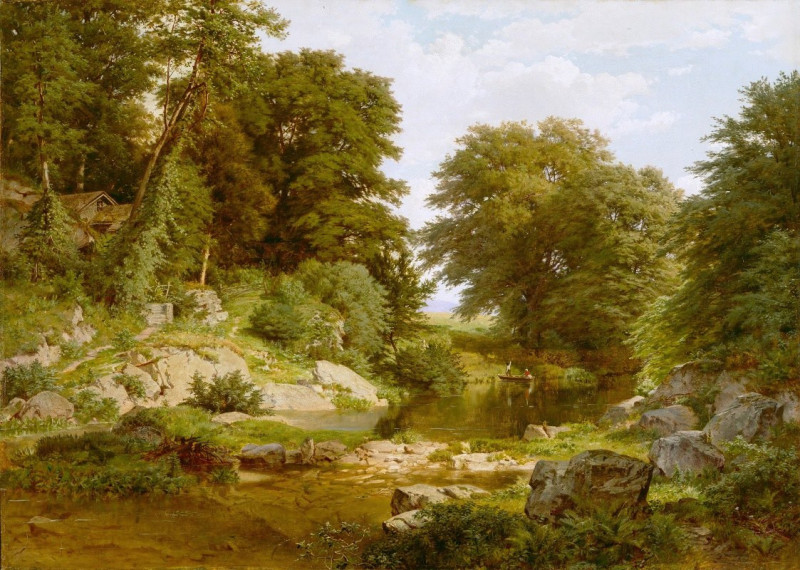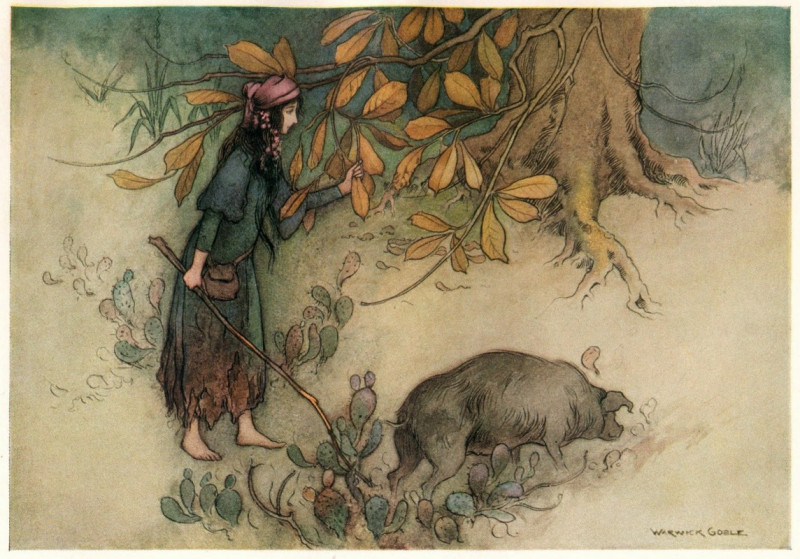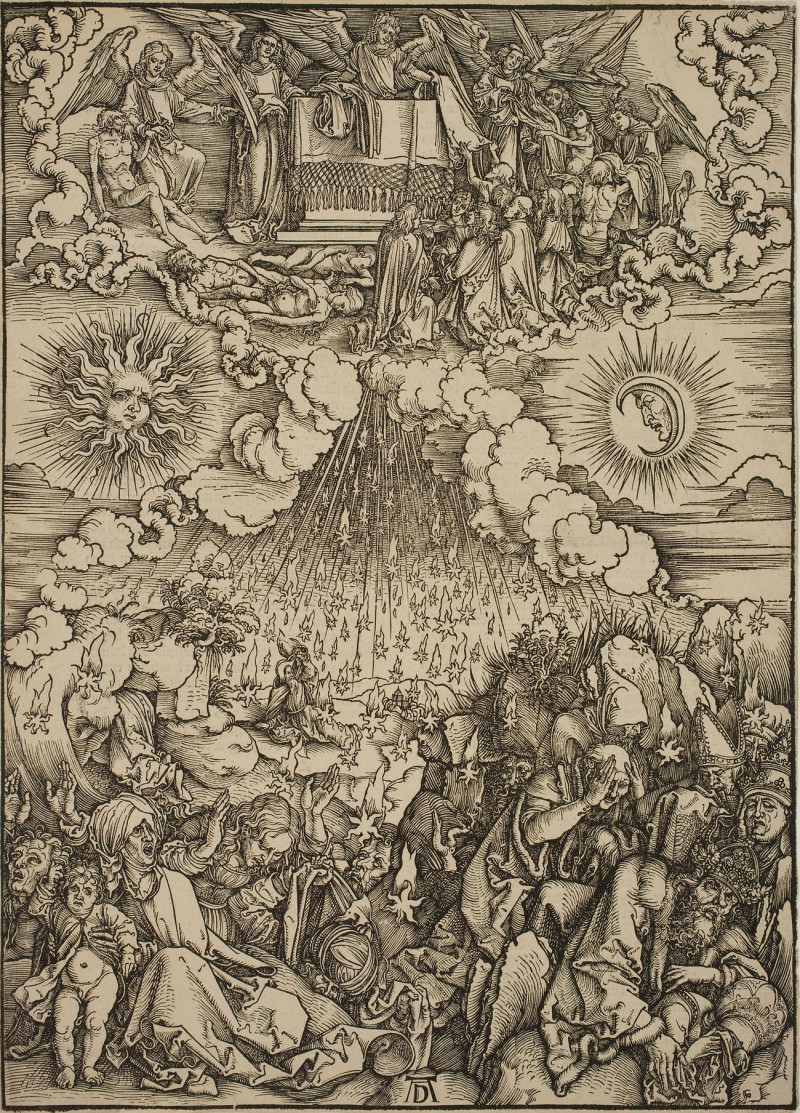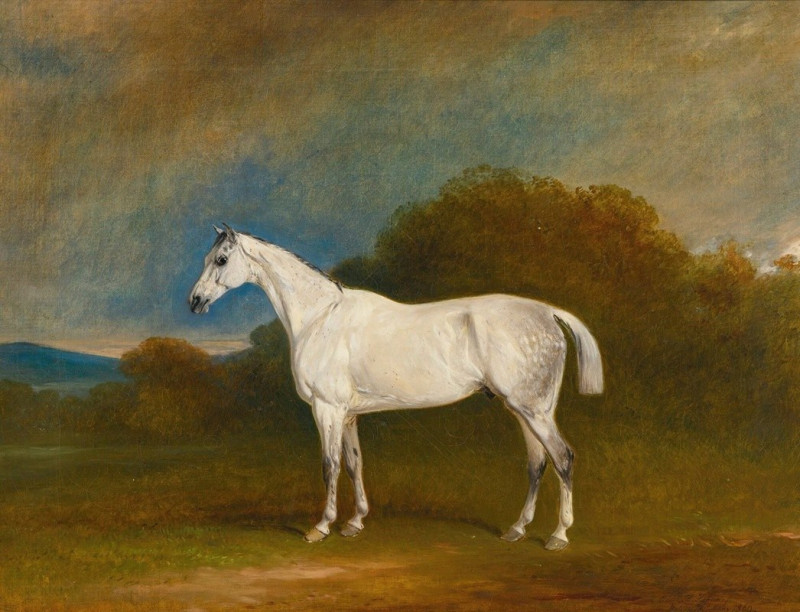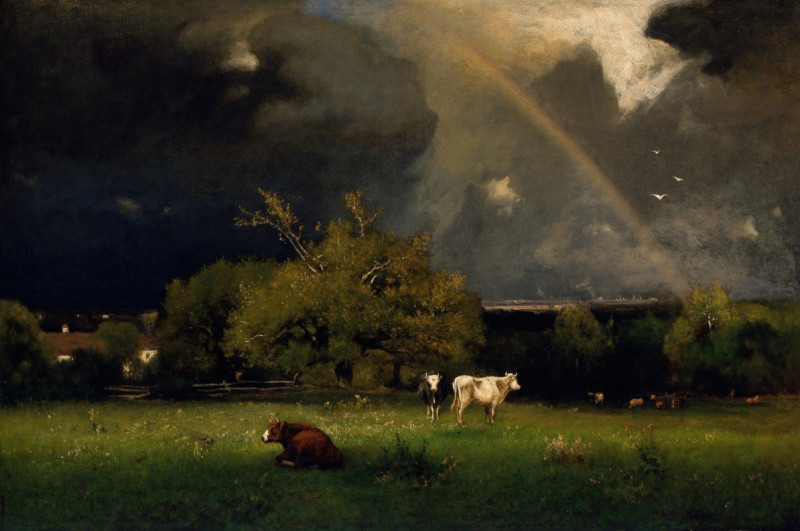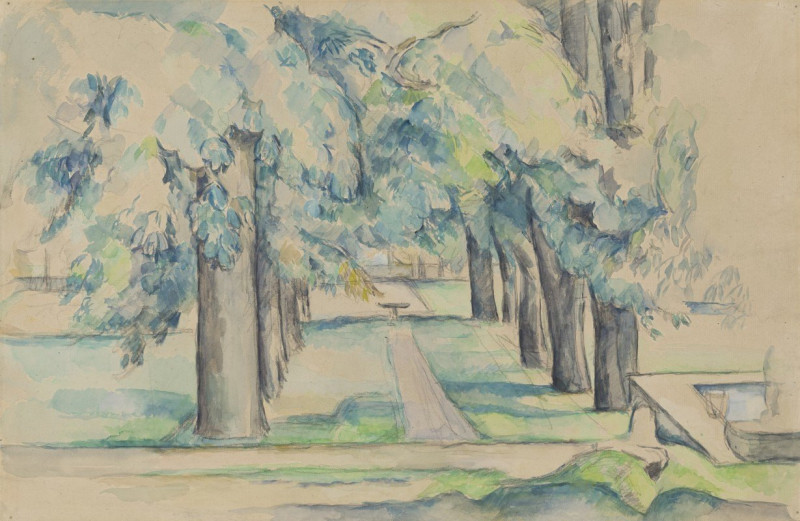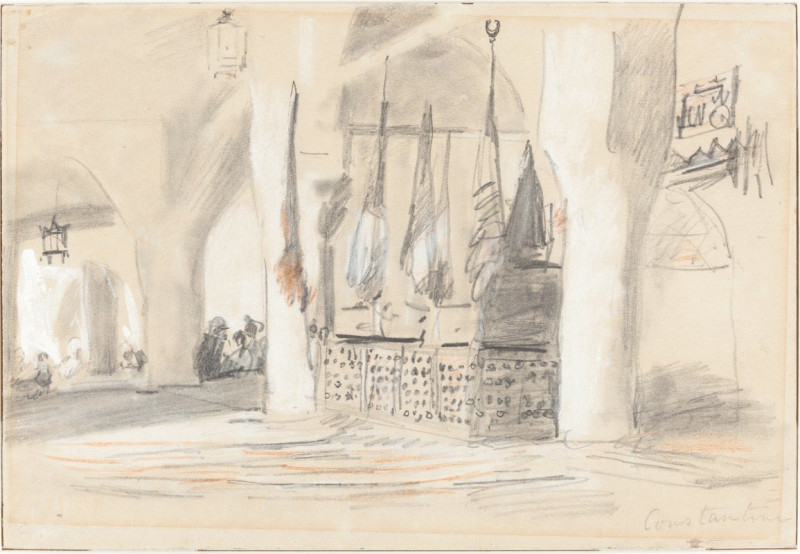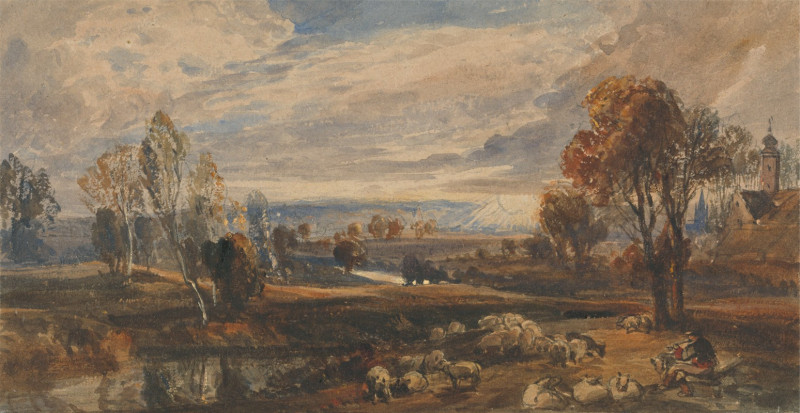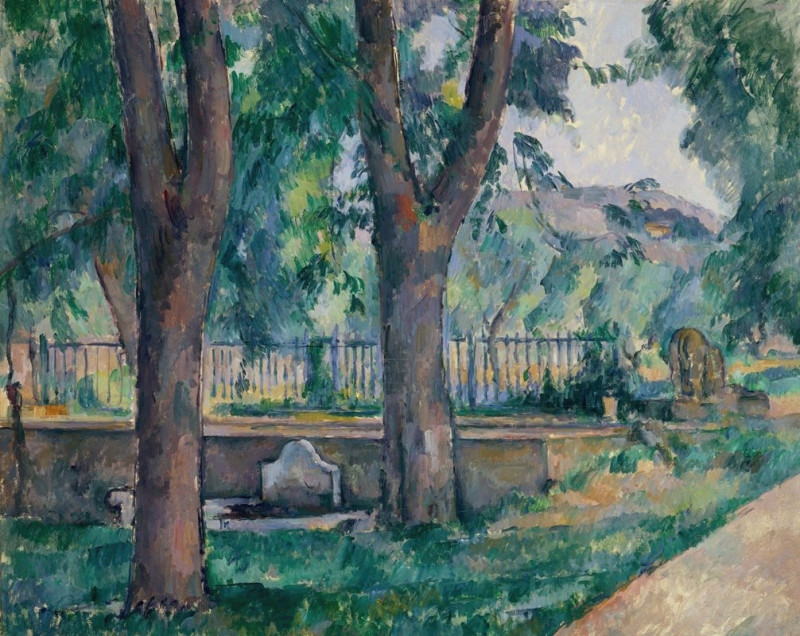Landscape with Cords of Wood (1896)
Technique: Giclée quality print
Recommended by our customers
More about this artwork
In the serene painting "Landscape with Cords of Wood" crafted in 1896, the Slovak artist Ľudovít Čordák invites viewers into a peaceful, natural setting that captures the simplicity and beauty of rural life. At first glance, the viewer's eye is drawn to the central elements of the painting: cords of wood scattered across a gentle, sloping ground. These rough-hewn logs, cut and left to rest amidst the grass, form an engaging contrast with the lush greenery surrounding them.Vibrant green trees fill the background, with one particularly striking tree in the middle ground standing tall, its leaves touched by the warm hues of an invisible sun. The radiant strokes of orange and yellow suggest a change of season, perhaps early autumn, adding depth and a dynamic element to the composition.In the background, Čordák paints a sweep of sky that is subtly rendered, its light brushstrokes suggesting a cloudy or overcast day. The hint of a horizon line where sky meets the distant foliage lends a further air of calmness and depth to the scene.Čordák's mastery of texture is evident in the detailed depiction of the wooden logs and the rough ground, as well as in the dynamics of the foliage that seems to sway with unseen breezes. His brushwork expertly conveys the varied textures of leaves, wood, and earth, creating an immersive scene that is both inviting and introspective."Landscape with Cords of Wood" does more than just depict a simple moment in nature; it resonates with the artist's deep appreciation for the natural world, highlighting both the tranquility and the transient beauty of the everyday.
Delivery
Returns
Ludwig Deutsch was an Austrian painter who settled in Paris and became a noted Orientalist artist.
Details of Ludwig Deutsch's life are obscure. He was born in Vienna in 1855 into a well-established Jewish family. His father Ignaz Deutsch was a financier at the Austrian court. He studied at the Vienna Academy of Fine Arts 1872–1875, then, in 1878, moved to Paris where he became strongly associated with Orientalism.

